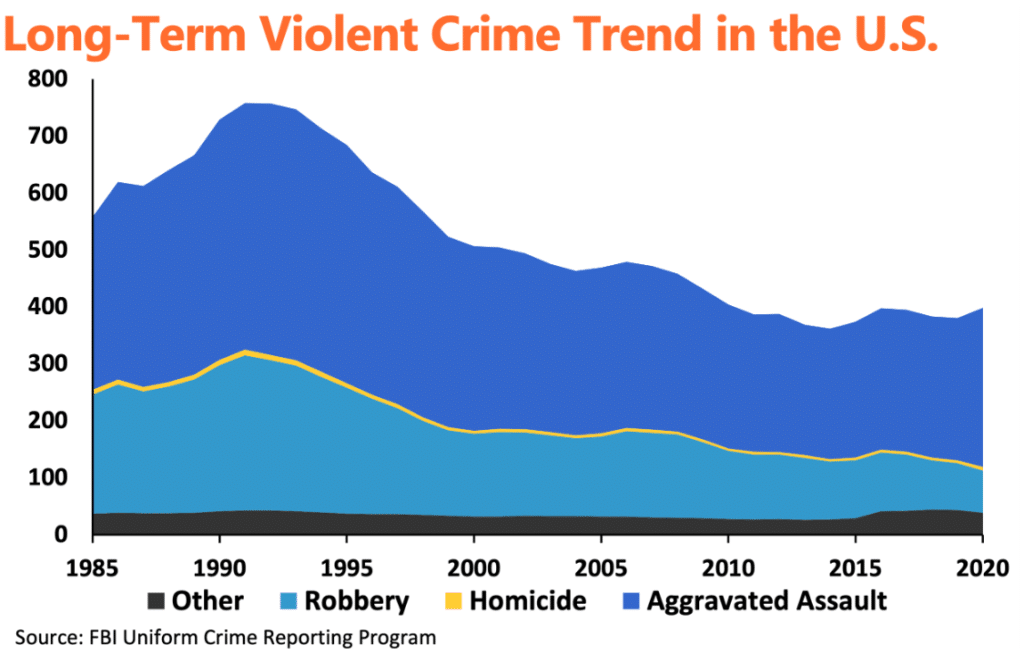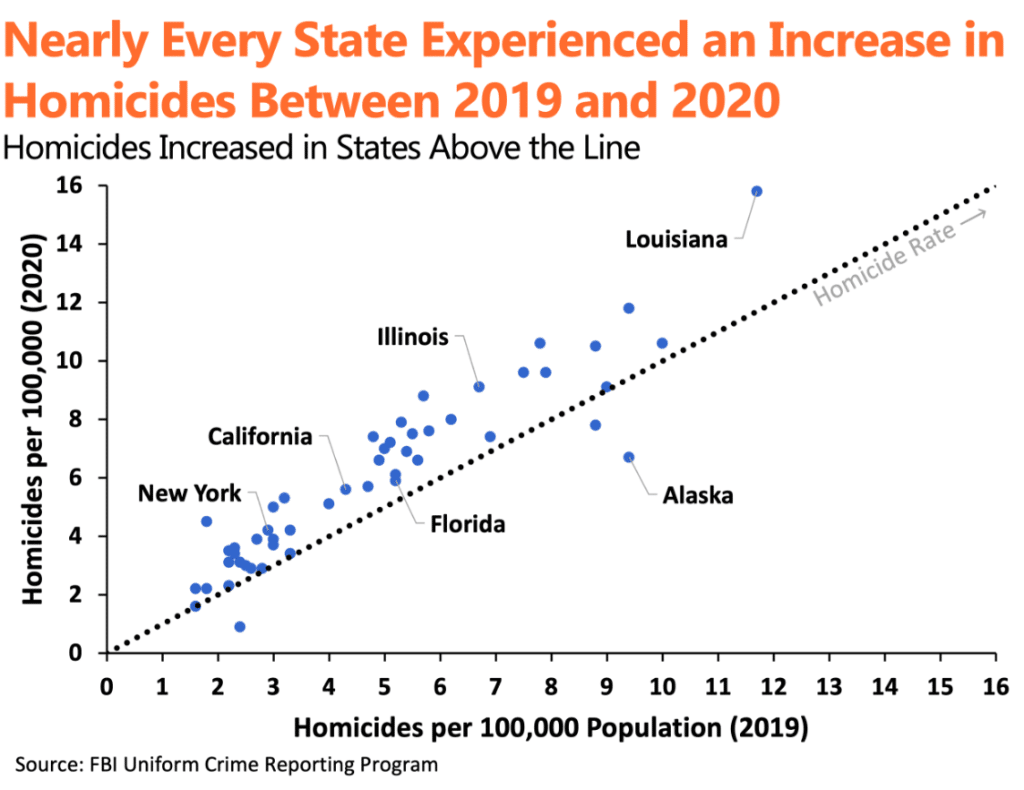Ensuring public safety, property rights, and the rule of law is essential to maintaining a free society. Taking crime seriously means relying on evidence-based policies informed by data. It is therefore important to understand crime data in context and avoid reactionary policy decisions that are not grounded in rigorous research.
Headlines across the country have warned of a spike in crime since 2019. Indeed, violent crime increased by roughly 4.6 percent in 2020 compared to the previous year. Homicides increased by nearly 30 percent––the largest single-year increase ever recorded. Aggravated assaults increased by 12 percent, nearly breaking the record increase of 14 percent set in 1986.
Without question, violent crime increased in 2020. However, year-over-year changes only tell part of the story and, in many ways, are a flawed way to view trends in crime. It is also important to observe long-term trends in the rate of violent crime (the number of crimes committed per 100,000 population). When viewed from this perspective, violent crime has decreased dramatically since its peak in the 1990s. In 2020, the violent crime rate remained near the record lows achieved throughout the 2000s.

The recent increase in violent crime appears to be a nearly universal phenomenon. Between 2019 and 2020, homicides increased in every state except Alaska, New Hampshire, and New Mexico. While it could be years before researchers determine the underlying causes of the rise in violent crime, its universality suggests dispersed––as opposed to localized––causes. In other words, it is unlikely that particular state or local policies are responsible for the spike in crime given that it occurred just about everywhere.
Crime rates increased more in some states than in others, but looking at variation among the states doesn’t offer any obvious insights. The rate of increase in each state does not appear to be correlated with criminal justice reforms, political factors, or demographic characteristics.


